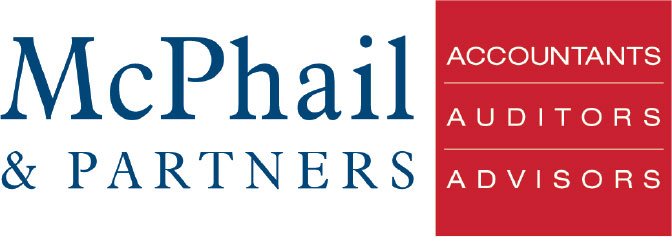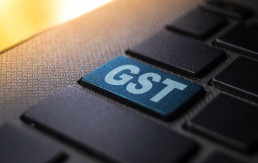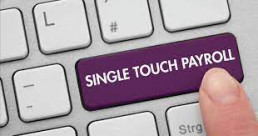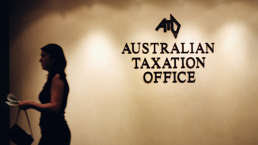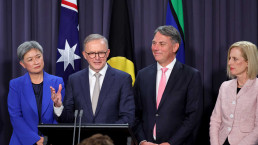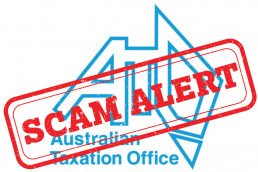More ATO Action on Super Guarantee Non-Compliance
Employers should take note that the ATO is now back to its pre-COVID-19 setting in relation to late or unpaid superannuation guarantee (SG) amounts. Firmer SG-related related recovery actions that were suspended during the pandemic have now recommenced, and the ATO will prioritize engaging with taxpayers that have SG debts, irrespective of the debt value.
The Australian National Audit Office (ANAO) recently issued a report on the results of an audit on the effectiveness of ATO activities in addressing SG non-compliance. While the ANAO notes that the SG system operates largely without regulatory intervention, because employers make contributions directly to super funds or through clearing houses, the ATO does have a role as the regulator to encourage voluntary compliance and enforce penalties for non-compliance.
Overall, the ANAO report found that the ATO activities have been only partly effective. The report notes that while there is some evidence that the ATO’s compliance activities have improved employer compliance, the extent of improvement couldn’t be reliably assessed.
Among other things, the ANAO recommends that the ATO maximise the benefit to employees’ super funds by making more use of its enforcement and debt recovery powers, and consider the merits of incorporating debtors that hold the majority of debt into its prioritisation of debt recovery actions.
The ATO has responded to say that while it paused many of its firmer SG related recovery actions through the COVID-19 pandemic, those have now recommenced, and its focus will generally be on taxpayers with higher debts, although it will be prioritising taxpayers with SG debts overall, irrespective of the debt value.
The ATO says it’s already begun implementing a preventative compliance strategy using data sources such as Single Touch Payroll (STP) and regular reporting from super funds. It will continue to investigate every complaint in relation to unpaid SG amounts, and take action where non-payment is identified. The actions available include imposing tax and super penalties, as well as recovering and back-paying unpaid super to employees. The ATO will also be increasing transparency of compliance activities and employer payment plans, so that affected employees can be aware when to expect super back-payments.
TIP: If you have issues with making super guarantee payments to your employees or would like to make a voluntary disclosure before a potential ATO audit, we can help. Contact us today.
Operation Protego: Detecting GST Fraud
The ATO has lifted the lid on its most recent operation to stamp out GST fraud, Operation Protego, to warn the business community not to engage with fraudulent behaviour and to encourage those who may have fallen into a criminal’s trap to make a voluntary disclosure.
Recently, the ATO has seen a rise in the number of schemes where people invent fake businesses in order to submit fictitious business activity statements (BASs) and obtain illegal GST refunds. The amounts involved in these schemes are significant, with $20,000 being the average amount in fraudulently obtained GST refund payments. The ATO is currently investigating around $850 million in payments made to around 40,000 individuals, and is working with financial institutions that have frozen suspected fraudulent amounts in bank accounts.
It’s possible that not all of the individuals involved in these refund schemes know they’re doing something illegal. Ads for schemes falsely offering to help people obtain loans or government disaster payments from the ATO have been on the rise on social media platforms. But ever-changing content about all sorts of pandemic and disaster related support has become commonplace online, and many people don’t have detailed knowledge about all the requirements of Australian business and tax law. It’s really not surprising that it can be difficult to distinguish scam promotions from genuine support measures.
TIP: The ATO wants to make it clear that it does not offer loans or administer government disaster payments. Any advertisement indicating that the ATO does these things is a rort.
Government disaster payments are administered through Services Australia if they are Federal government payments, or through various state and territory government bodies if they are state or territory government payments.
Scheme promoters will also sometimes require individuals or businesses to hand over their myGov details. People who may have shared myGov login details for themselves or their businesses with scheme operators are encouraged to contact the ATO for assistance.
ATO Resumes Collecting Aged Debts
Taxpayers with aged debts that the ATO had paused collecting or put on hold during the COVID-19 pandemic should be aware that offsetting aged debts against tax refunds or credits has now resumed. The aged debts can be offset either from ATO accounts or credits from other government agencies, although a debt will not be offset if the only available credit relates to a Family Tax Benefit amount.
Tip: “Aged debts” is a collective term the ATO uses for uneconomical non-pursued tax debts that it’s placed on hold and has not undertaken any recent action to collect. These debts don’t typically show up on taxpayers’ online accounts as an outstanding balance.
Usually when a debt is put on hold, the ATO notifies the taxpayer via a letter that the debt collection has been paused, although any credits the taxpayer is entitled to will be offset against the debt. The ATO reserves the right to re-raise the debt in the future, depending on the circumstances of the taxpayer. Letters were sent out in May 2022 to remind taxpayers that they have aged debts and June 2022 will see the recommencement of debt collection.
While most taxpayers (or their tax agents) should have received their aged debts letter by now, some may not have received anything, due to a change of address or patchiness in the postal service. The first clue for them that they may have an aged debt could be when they notice that their refund is less than expected or a credit on one account is less than it should be.
To avoid surprises, if you’re unsure whether you have an aged debt you can check ATO Online Services for a transaction with the description “non-pursuit” on your statement of account. If you have multiple accounts (for example, a business and an individual account), remember to check them all.
Single Touch Payroll: Phase 2
While Single Touch Payroll (STP) entered Phase 2 on 1 January 2022, many employers might not yet be reporting the additional information required under this phase because their digital service providers (DSPs) have deferrals for time to get their software ready and help their customers transition. However, once these deferrals expire, employers will need to start reporting additional information in their payroll software.
TIP: Essentially, STP works by sending tax and super information from an STP-enabled payroll or accounting software solution directly to the ATO when the payroll is run.
Entering STP Phase 2 means that additional information which may not be currently stored in some employers’ payroll systems needs to be reported through the payroll software. For example, while many newer businesses may have employee start date information handy, older businesses may have trouble finding exact records, particularly for long-serving employees. In those instances, a default commencement date of 01/01/1800 can be reported.
Employers need to report either a TFN or an ABN for each payee included in STP Phase 2 reports. Where a TFN isn’t available, a TFN exemption code must be used. If a payee is a contractor and an employee within the same financial year, both their ABN and their TFN must be reported.
Employers also need to report the basis of employment according to work type. That is, whether an individual is full-time, part-time, casual, labour hired, has a voluntary agreement, is a death beneficiary, or is a non-employee. The report generated for STP Phase 2 includes a six-character tax treatment code for each employee, which is a shortened way of indicating to the ATO how much should be withheld from their payments. Most STP solutions will automatically report these codes, but it’s a good idea to understand what the codes are to ensure that they’re correct.
Income and allowances are also further drilled down – instead of reporting a single gross amount of an employee’s income, employers need to separately report on their gross income, paid leave, allowances, overtime, bonuses, directors’ fees, return to work payments and salary sacrifice amounts.
If your DSP has a deferral in place, you don’t need to apply for your own deferral and will only need to start reporting STP Phase 2 information from your next pay run after your DSP’s deferral expires. However, if your business needs more time in addition to your DSP’s deferral, you can apply for your own deferral using ATO Online Services.
Tax Time 2022: ATO Focus Areas
Tax time 2022 is fast approaching, and this financial year, the ATO will again be focusing on a few key areas to ensure Australians are doing the right thing and paying the right amount of tax.
Like last year, the ATO recommends that people wait until the end of July to lodge their tax returns, rather than rushing to lodge at the beginning of July. This is because much of the pre-fill information will become available later in the month, making it easier to ensure all income and deductions are reported correctly the first time. People who lodge early often forget to include information about interest from banks, dividend income and payments from government agencies and private health insurers.
While the ATO receives and matches information on rental income, foreign sourced income and capital gains, not all of that information will be pre-filled for individuals, so it’s important to ensure you include it all as well.
TIP: If you need help this tax time, we have the expertise to help you report all the right information and maximize your deductions. Contact us today.
Some of the traditional areas the ATO is focusing on this year include record-keeping, work-related expenses and rental property income and deductions, as well as capital gains from property and shares.
Any deductions you claim must be backed by evidence – people who deliberately attempt to increase their refunds by falsifying records or don’t have evidence to substantiate their claims will be subject to “firm action”.
For people who are working from home or in hybrid working arrangements and claim related expenses, the ATO will be expecting to see a corresponding reduction in other expenses you claim, such as car, clothing, parking and tolls expenses.
With the intense flooding earlier this year, some rental property owners may have received insurance payouts. These, along with other income received such as retained bonds or short-term rental arrangement income, need to be reported.
Lastly, the ATO’s keeping a close eye on people selling property, shares and cryptocurrency, including non-fungible tokens (NFTs). Any capital gains need to be included in your tax return so you pay the right tax on them. But if you’ve recently sold out of cryptocurrency assets you may have a capital loss, which can’t be offset against other income such as salary and wages, only against other capital gains.
What’s Next on the Agenda for the Government?
With the election campaign finally over and a new government sworn in, many Australians will be wondering what a Labor government is likely to tackle over the next term. A helpful starting point is Labor’s election promises, which provide a useful indication of possible areas that will be targeted over the next few years.
One of the big tax policies that Labor took to the election was the party’s commitment to ensuring that multinationals pay their fair share of tax in Australia.
During the election campaign, Labor also promised to reduce the cost of child care by lifting the maximum child care subsidy rate to 90% for those with a first child in care and retaining the higher child care subsidy rates for second and additional children in care. For those with school-aged children, the promise of the increased child care subsidy will be extended to outside school hours care.
Labor also made announcements which will affect individuals and businesses, both big and small. These include more security for gig economy workers, making wage theft illegal, and training more apprentices.
ATO’s COVID-Related Support for SMSFs
Because of the financial impacts of COVID-19, trustees of a self managed superannuation fund (SMSF), or a related party of the fund, may provide or accept certain types of relief, which may give rise to contraventions of the super laws. Some trustees may also have been stranded overseas because of travel bans, which can affect their fund’s residency status.
In recognition of these issues, the ATO is offering support and relief to SMSF trustees for the 2019–2020, 2020–2021 and 2021–2022 income years.
This generally includes not taking any compliance action against an SMSF and not requiring the SMSF auditor to report related contraventions in the following areas:
- where an SMSF trustee or a related party of the SMSF offered rental relief to a tenant due to COVID-19;
TIP: Temporary changes to a lease agreement for rental relief need to be properly documented, together with the reasons for those changes. A formal variation of the lease may need to be executed.
- where a plan to get the value of SMSF’s in-house asset holdings below 5% of the fund’s total assets couldn’t be executed in time because of COVID-19;
- where a fund offered loan repayment relief because the borrower was experiencing difficulty repaying the loan because of COVID-19;
- where a fund no longer satisfies the residency rules because the trustee/s were stranded overseas for an extended period; and
- where a fund has a limited recourse borrowing arrangement (LRBA) with a related party lender, and the lender offered COVID-19 loan repayment relief to the fund.
Trustees must properly document all of these sorts of relief and provide their approved SMSF auditor with evidence to support it for the purposes of the annual SMSF audit.
Federal Budget Fuel Excise Reduction: Will All Businesses Benefit?
The uncertainty around availability of fuel has seen fuel prices soar across Australia. The 2022–2023 Federal Budget proposed an answer for this by way of a temporary (six-month) reduction to fuel excise.
The six-month reduction is now law, and will end at midnight on 28 September 2022.
For petrol and diesel, this means an excise reduction from 44.2 to 22.1 cents per litre, which is already being felt by users at the pump. But who will actually benefit from this Budget promise and what does it mean for businesses claiming fuel tax credits (FTCs)?
Snapshot: who will benefit?
Individuals:
- all fuel uses of individuals – benefit of 22.1 cents per litre.
Businesses:
- businesses operating light vehicles on public roads – benefit of 22.1 cents per litre;
- businesses operating heavy vehicles on public roads – benefit of 4.3 cents per litre;
- businesses operating vehicles on private roads – no benefit; and
- businesses using fuel for non-vehicle use (auxiliary, machinery, plant and equipment) – no benefit.
What should businesses do?
For businesses that currently claim FTCs, it’s important to understand the impact of these changes on their FTC entitlement and to adjust their FTC process accordingly.
We expect there will be increased complexity for businesses claiming FTCs in the first few weeks of the temporary measure and the weeks following its conclusion. This is because the changes in fuel excise are expected to trickle through from fuel suppliers depending on where businesses are located and how they purchase their fuel. Businesses will be required to determine which rate of fuel excise has been applied to fuel purchases to determine the rate of fuel tax credit available.
ATO Urges Vigilance: New TFN and ABN Scams
The ATO is urging people and businesses to be vigilant following an increase in reports of fake websites offering to provide tax file numbers (TFN) and Australian business numbers (ABN) for a fee, but failing to provide those services.
The fake TFN and ABN services are often advertised on Facebook, Twitter or Instagram. The scammers use the fraudulent websites they advertise to steal both money and personal information.
Tip: The ATO and Australian Business Register (ABR) do not charge fees for providing a TFN or an ABN. It’s free, quick and easy to use government services online to apply for a TFN through the ATO, or apply for an ABN through the ABR.
The ATO is also still seeing scammers impersonating the ATO, making threats, demanding the payment of fake tax debts or claiming a TFN has been “suspended” due to fraud.
In 2021, more than 50,000 people reported various ATO impersonation scams, with victims losing a total of more than $800,000.
Tips to protect yourself from scammers
- Know your tax affairs – You will be notified about your tax debt before it is due. Check if you have a legitimate debt by logging into your myGov account or calling your tax agent. Find the contact details for the ATO or your tax agent independently by searching online or using your own paper records – don’t trust details provided by possible scammers.
- Guard your personal and financial information – Be careful when clicking on links, downloading files or opening attachments. Only give your personal information to people you trust and don’t share it on social media.
- If you’re not sure, don’t engage – If a call, SMS or email leaves you wondering if it’s genuine, don’t reply. You can phone the ATO’s dedicated scam line on 1800 008 540 to check if it is legitimate. You can also verify or report a scam online at www.ato.gov.au/scams and visit ScamWatch at www.scamwatch.gov.au to get information about scams (not just tax scams).
- Know legitimate ways to make payments – Scammers may use threatening tactics to trick you into paying fake debts via unusual methods. For example, they might demand pre-paid gift cards or transfers to non-ATO bank accounts. To check that a payment method is legitimate, visit www.ato.gov.au/howtopay.
Movement at the FBT Station: COVID-19 Tests, Car Parking
FBT is generally seen as a relatively slow-moving and quiet area of tax law. But Budget day this year saw some movement at the FBT station, specifically regarding COVID-19 tests provided to staff, and also car parking benefits.
RATs for employees
The 2022–2023 Federal Budget included a measure, now passed into law, to make costs for taking a COVID-19 test to attend their workplace tax-deductible for individuals from 1 July 2021.
COVID-19 tests, including rapid antigen tests (RATs), provided by employers to employees are considered benefits under the FBT regime.
However, by allowing for an individual tax deduction, the new measure also allows for the operation of the “otherwise deductible” rule to reduce the taxable value of the benefit to zero. The result? By introducing a specific individual income tax deduction, employers would also not have to pay FBT.
Neat solution. Well, apart from the catch: employee-level declarations could be required when the provision of a RAT is a property fringe benefit (that is, legal ownership of the item passes from the employer to the employee).
Where a RAT is provided as an expense reimbursement or residual benefit, an employer-level declaration is available (that is, one declaration signed by the public officer on behalf of each employing entity lodging an FBT return to declare that there is no private use).
In case collecting hundreds or thousands of employee-level paper declarations is not how you’d like to spend your time, we see three options at this stage:
- assess the potential application of the minor benefit rule to your situation;
- explore your policy and processes to determine whether the benefit provided could meet an exemption or documentation exception; and
- use an automated, electronic declaration tool to take some pain out of the process.
“Commercial parking station” definition
As a reminder:
- a car parking fringe benefit can only arise where the employee parks their car for at least four hours during a daylight period in an employer-provided space in the vicinity of the principal workplace;
- there must be a commercial parking station that charges more than a threshold amount (currently $9.25) for all-day parking within one kilometre of the entrance to the employer’s car park; and
- “all-day parking” means parking continuously for at least six hours between 7 am and 7 pm.
The scope of the term “commercial parking station” is therefore fundamental to determining if an employer has taxable car parking benefits.
Broadly, a commercial parking station is one where car parking spaces are, for payment of a fee, available in the ordinary course of business to members of the public for all-day parking.
The ATO issued a ruling in 2021 that no longer applied the interpretation that car parking facilities with a primary purpose other than providing all-day parking (usually charging significantly higher rates) are not commercial parking stations. This was to apply from 1 April 2022.
In effect, this would bring facilities like shopping centre car parks and hospital car parks into the definition of a “commercial parking station”. For employers with only that type of parking within a one-kilometre radius, the consequences were significant, potentially bringing previously non-taxable employer-provided car parking within the scope of FBT.
The Federal Government has announced it will be undertaking consultation with the intent of restoring the previously understood application of FBT to car parking fringe benefits, which is closer to the original policy intent of the car parking FBT provisions. The readjusted definition would then apply from 1 April 2022 instead.
